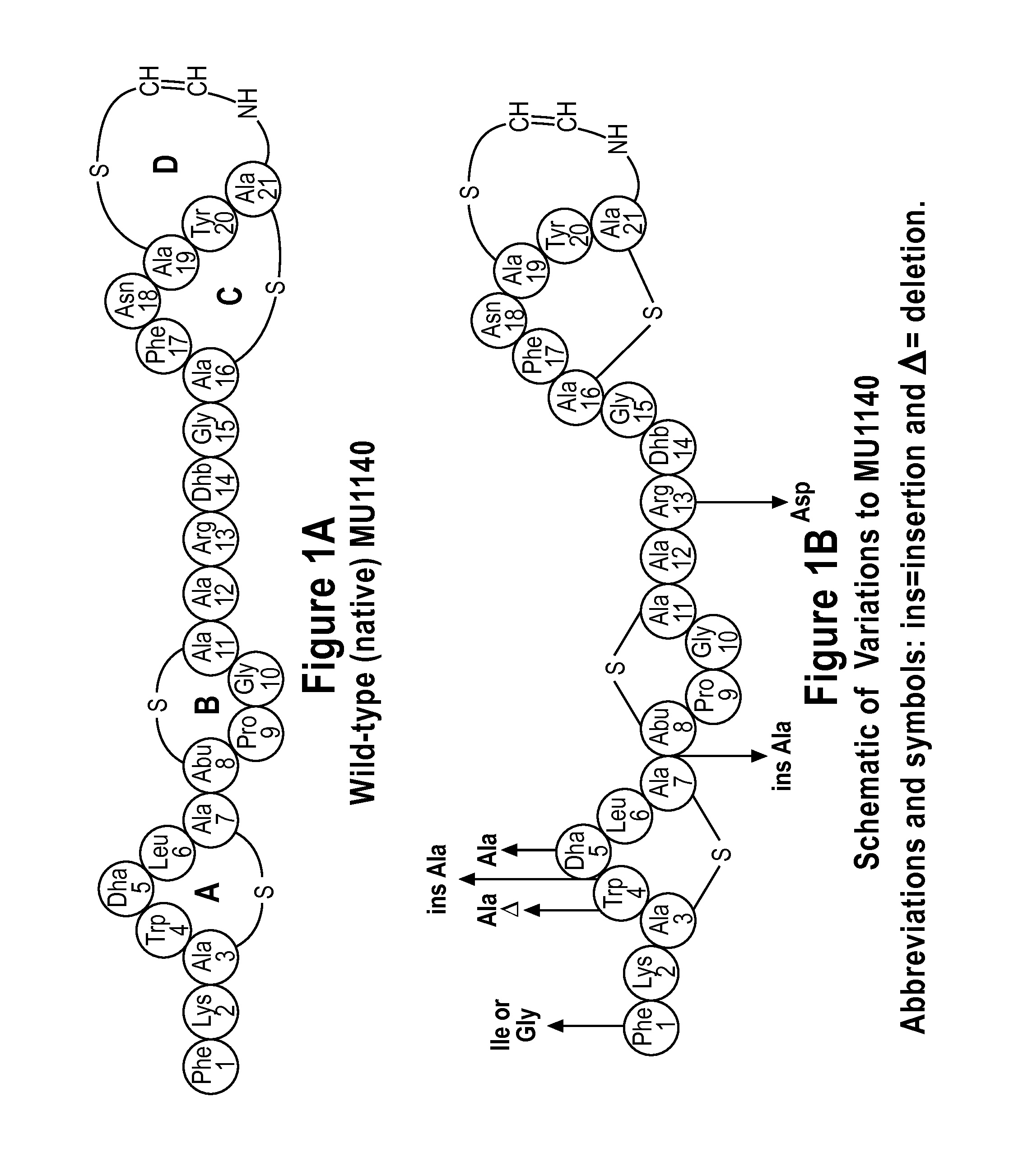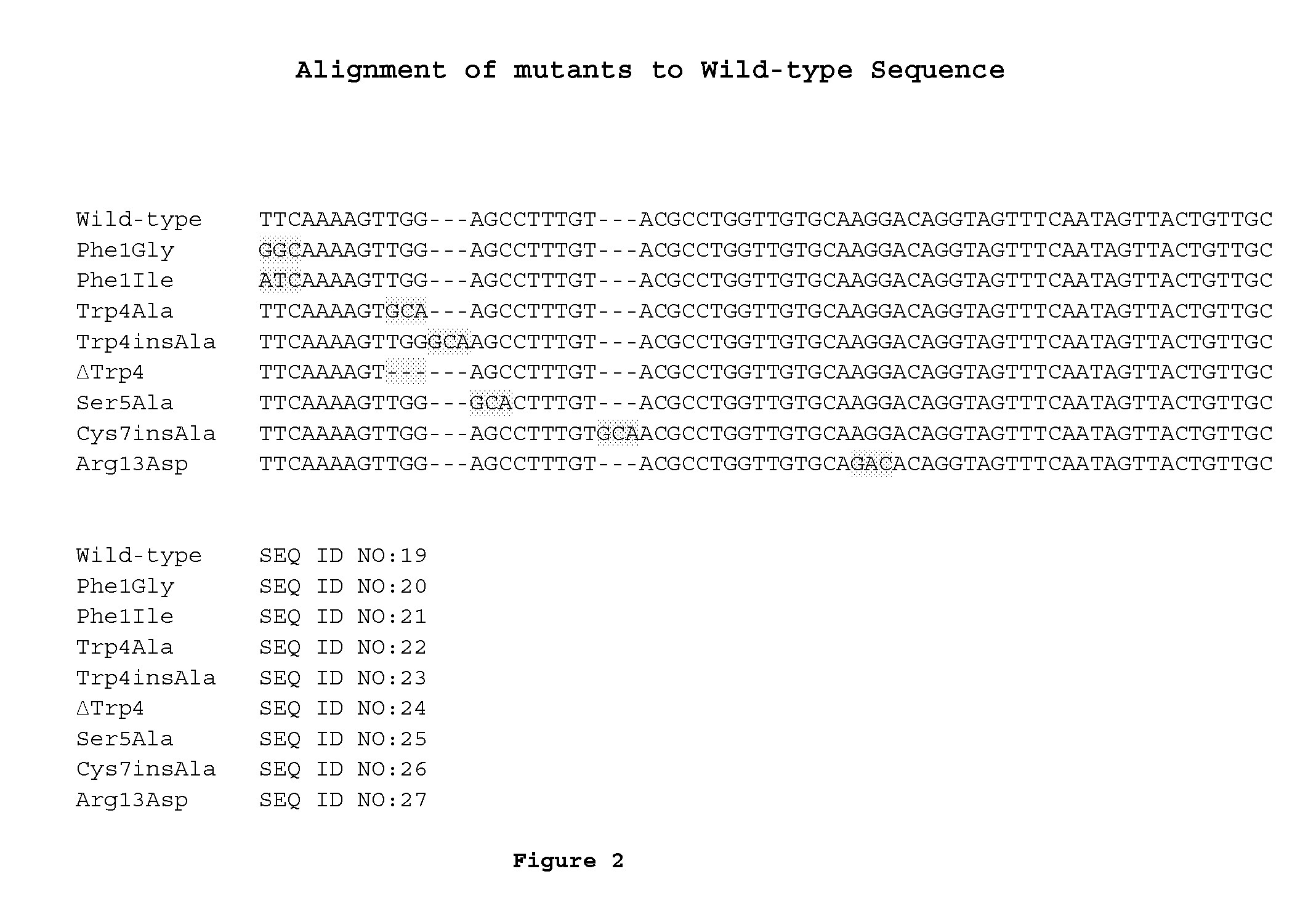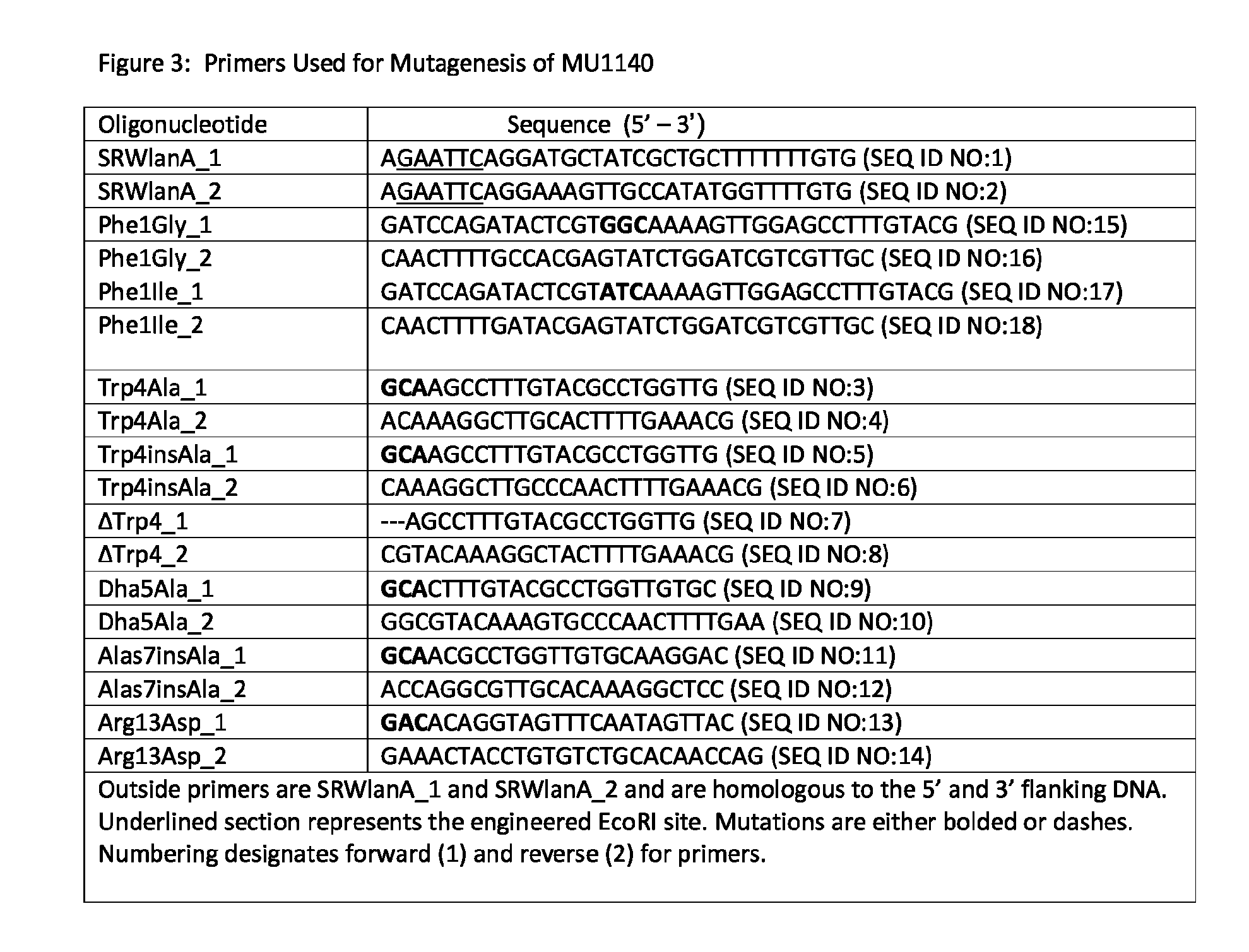Replacement Therapy for Dental Caries
a technology for replacing therapy and caries, which is applied in the direction of chewing gum, drug compositions, peptides, etc., can solve the problems of tooth decay and tooth destruction, and achieve the effect of reducing the incidence or severity of dental caries
- Summary
- Abstract
- Description
- Claims
- Application Information
AI Technical Summary
Benefits of technology
Problems solved by technology
Method used
Image
Examples
example 1
Mutagenesis of MU1140
[0110]The Streptococcus mutans genome database and Ian gene cluster, GenBank / EMBL accession number (AF051560), was used to design primers for the mutagenesis and sequencing work. The open reading frame (ORF) of the native MU1140 structural gene (lanA) plus 500 base pairs (bp) of 5″ and 3′ flanking DNA was cloned into the pVA891 plasmid to create p190. The cloned insert in p190 was derived by PCR amplification of chromosomal DNA of S. mutans strain JH1140 (ATCC 55676) using the primer sequences of SRWlanA—1 and SRWlanA—2 (see FIG. 3). Reagents and media were purchased from Fisher Scientific, and enzymes were purchased from New England BioLabs (Ipswich, Mass.).
Polymerase Chain Reaction (PCR)
[0111]Mutations (see FIG. 1B) were introduced into the propeptide region of lanA, the structural gene for MU1140, to create the variants of MU1140. See FIG. 2. The p190 plasmid (J. D. Hillman, unpublished) was used as a template and the site specific mutations were introduced u...
example 2
Bioactivity of Mutants
[0117]The parent S. mutans strain, JH1140 (ATCC 55676), and the mutants were grown to an OD600 of 0.8 and diluted to an OD600 of 0.2. Samples (2 μL) of the cultures were spotted in triplicate on a pre-warmed THyex agar plate (150×15 mm) and allowed to air dry. This assay was performed in this manner to help ensure that each sample had the same colony size for comparing zones of inhibition. The plate was incubated for 24 hours at 37° C., and then placed in an oven at 55° C. for thirty minutes to kill the bacteria before the M. luteus ATCC 272 indicator strain was overlayed in molten top agar. Heat killing the bacteria prevented any further antimicrobial compound production. M. luteus ATCC 272 was grown to an OD600 nm between 0.4 and 0.8 and diluted to an OD600 nm of 0.2. Then, 400 μl of these cells was added to 10 ml of molten top agar (42° C.) (30 g / L Todd Hewitt Broth and 7.5 g / L Nutrient agar). All 10 mL of top agar containing the standardized suspension was ...
example 3
Minimum Inhibitory Concentration
[0122]Wild-type mutacin 1140, mutacin 1140 with a F1I mutation, mutacin 1140 with a W4A mutation, and mutacin 1140 with a R13D mutation was purified to about 90% purity (measured via HPLC). The minimum inhibitory concentration (MIC) of MU1140 and variants of MU1140 was determined against several bacteria. The MIC is the lowest concentration of MU1140 that will inhibit the visible growth of a microorganism after 24 hour incubation. A lower MIC is an indication of greater inhibitory activity. Preparation of the antimicrobial agent and bacterial inoculum for minimum inhibitory concentrations (MICs) was performed by following the method described in Clinical Laboratory Standard Institute (CLSI) M07-8A with some minor modifications. Streptococcus mutans UA159 was tested overnight in a shaking incubator to maintain uniform dispersion of the bacteria. Clostridium difficile UK1 was tested in an anaerobic chamber at 37° C. The medium used was THyex. The result...
PUM
| Property | Measurement | Unit |
|---|---|---|
| Fraction | aaaaa | aaaaa |
Abstract
Description
Claims
Application Information
 Login to View More
Login to View More - R&D
- Intellectual Property
- Life Sciences
- Materials
- Tech Scout
- Unparalleled Data Quality
- Higher Quality Content
- 60% Fewer Hallucinations
Browse by: Latest US Patents, China's latest patents, Technical Efficacy Thesaurus, Application Domain, Technology Topic, Popular Technical Reports.
© 2025 PatSnap. All rights reserved.Legal|Privacy policy|Modern Slavery Act Transparency Statement|Sitemap|About US| Contact US: help@patsnap.com



